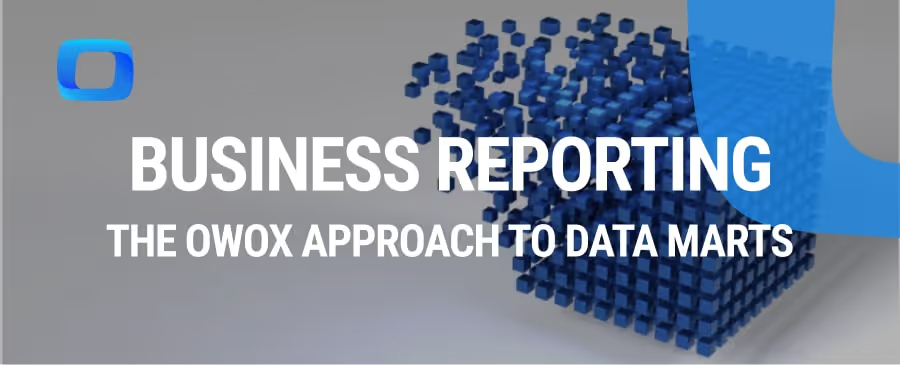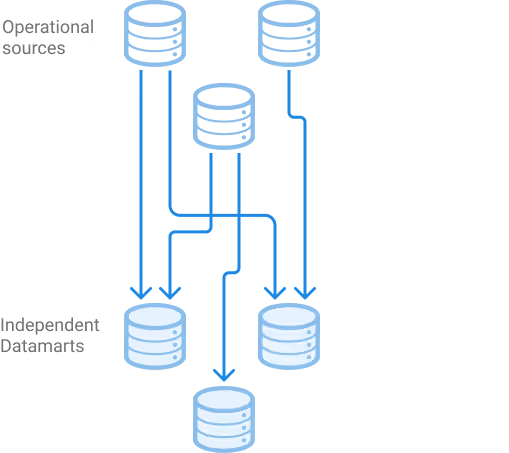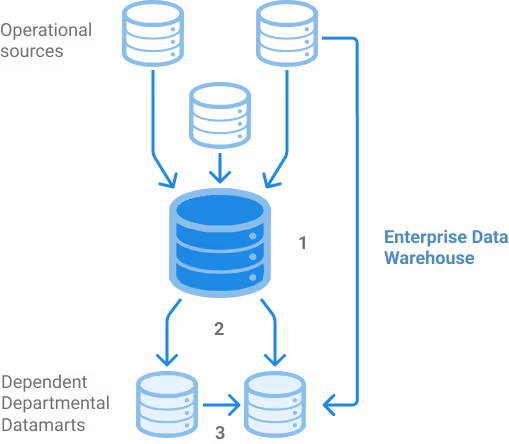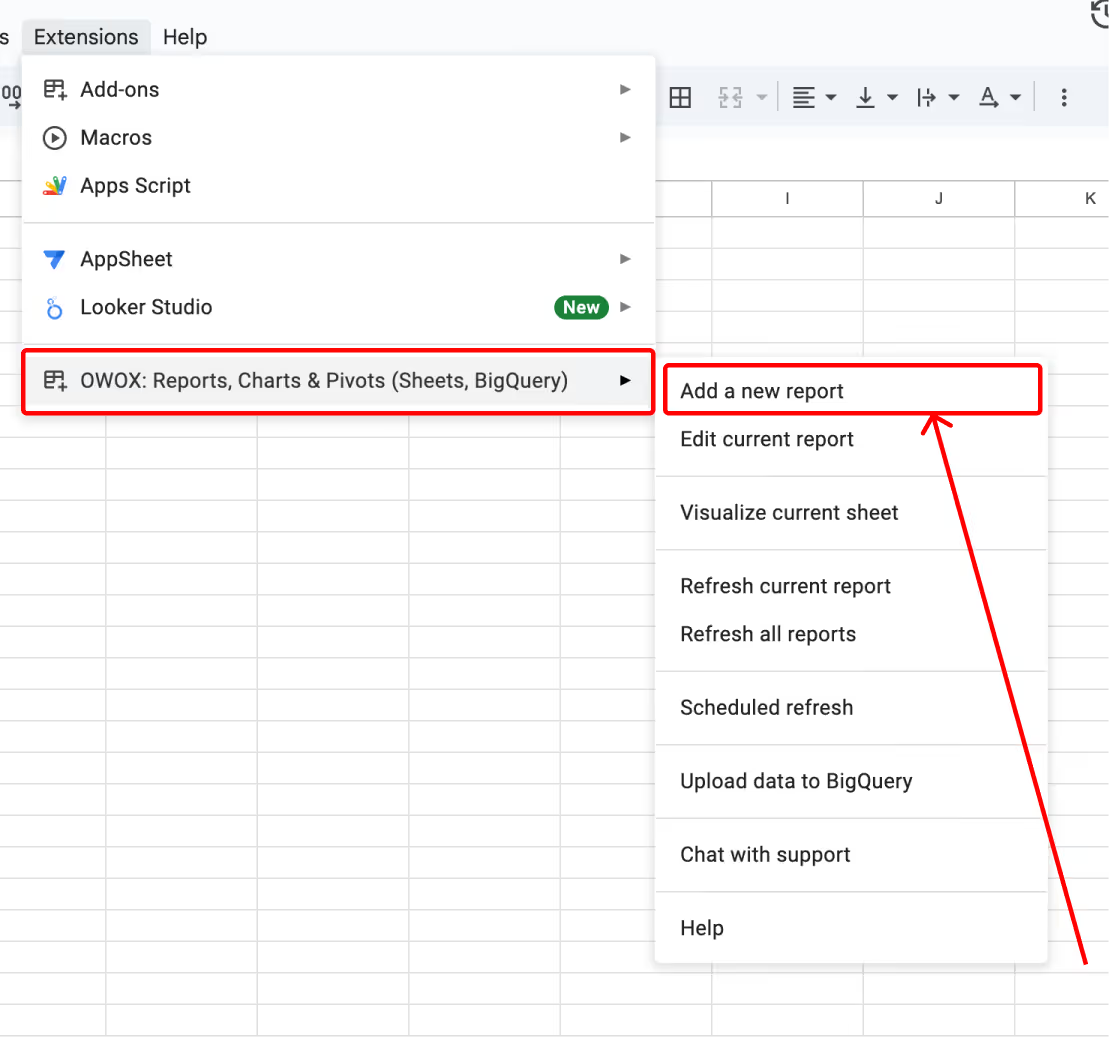Data is everywhere, but is your business truly using it effectively? Many companies struggle with slow reports, scattered data, and complex analytics setups that make decision-making harder than it should be.
Data marts solve this by giving business teams fast access to the specific data they need without waiting on IT or digging through an entire data warehouse.

But here’s the catch, not all data marts are created equal. The wrong setup can lead to data silos, inconsistencies, and extra costs instead of improved efficiency. So, how do you build a data mart that actually works?
In this guide, we’ll break down the types, structure, and benefits of data marts, show how they compare to data warehouses and data lakes, and explain how OWOX BI helps businesses create powerful, scalable reporting systems effortlessly
A data mart is a smaller, focused version of a data warehouse designed for a specific department, business unit, or subject area.
It can also be defined as a SQL query based on multiple tables with some additional attributes eg. owner, creator, limit, filters, etc.
Unlike a data warehouse, which stores enterprise-wide data, a data mart provides quick access to relevant information for teams like marketing, sales, or finance.
Some businesses allow departments to manage their own data marts, ensuring faster reporting and analysis.
A data mart basically provides data access, allowing teams to focus on relevant insights without navigating complex enterprise-wide datasets.
Let’s look at some of the benefits:
Data marts are classified based on their relationship with data warehouses and how they source and store data.
The three main types are dependent, independent, and hybrid data marts, each serving different business needs and levels of data integration.
A dependent data mart is created from an existing data warehouse, such as Google BigQuery or Snowflake.
It follows a top-down approach, where all company data is stored centrally, and relevant portions are extracted for analysis.
.png)
To set up a dependent data mart, specific data is aggregated, restructured, and stored for business teams to query. It can exist as:
An independent data mart operates as a standalone system, separate from a data warehouse. It is designed for a single business function or department, such as marketing, finance, or sales.

Data is collected from internal or external sources, and data mart represents the way to access that data for reporting and querying. Since independent data marts do not rely on a central warehouse, they are easier to build, but harder to manage at scale.
A hybrid data mart integrates data from both a data warehouse and other source systems such as regular data bases, combining aspects of both dependent and independent data marts.
This allows for greater flexibility and faster access to business-specific data.

A hybrid data mart provides the speed and ease of an independent system, while maintaining the data consistency and integration of a dependent data mart. It helps businesses merge structured and unstructured data to support advanced analytics and self-service reporting.
The structure of a data mart is typically defined to align with specific business goals, providing tailored data solutions that facilitate efficient and effective decision-making within distinct organizational departments or contexts.
Here's an overview of the typical structures that could be found in data marts:
This type of data marts focus narrowly on a single subject area or business function, such as finance, sales, product or marketing. This targeted approach ensures that the data provided is highly relevant and readily accessible for business users within the specific domain or context enabling them to swiftly retrieve the data they need from an easy to use tool for reporting, for example, OWOX Reports.
These types of data marts primarily structured based on the 3-rd party source schema, like Google Analytics, Facebook Ads, internal systems or databases. They may also be designed based on the data warehouse and are capable of integrating external data sources to enhance analytical depth. The selection and integration of these sources are predicated on the specific analytical needs they serve.
The architectural framework of data mart collected into a data model is typically designed using either a Star Schema, Snowflake Schema, or Data Vault Schema, each offering unique benefits depending on business needs.
A Star Schema is a simple, efficient structure where a central fact table connects to multiple dimension tables. Since there are no dependencies between dimension tables, queries run faster and require fewer joins.
Example:
A retail company needs a fast and efficient way to analyze sales performance across different stores, products, customers, and time periods. Given the high volume of sales transactions, a Star Schema is the perfect solution.
In this structure, a central fact table stores all sales transactions while dimension tables provide details about products, customers, store locations, and time periods.

A Snowflake Schema extends the Star Schema by normalizing dimension tables to reduce data redundancy and ensure data integrity. This structure uses less storage space but increases query complexity, requiring more joins.
Example:
Suppose the same retail company wants a more structured and storage-efficient approach to track sales across stores, products, customers, and time periods, a Snowflake Schema is the ideal choice.
In this model, the fact table stores sales transactions, while dimension tables are further normalized into sub-tables to reduce redundancy and improve data integrity.

A data vault schema is a modern approach for flexibility, scalability, and agility in enterprise data warehouses. It eliminates the need for data cleansing, making it easier to integrate new data sources without disrupting existing schemas.
Example:
The retail company wants to track historical sales data accurately while ensuring scalability as its operations expand. With frequent updates to product details, store locations, and customer information, maintaining data integrity is crucial. A data vault schema is the ideal solution
This model separates core business entities (hubs), relationships (links), and attributes (satellites) to ensure historical accuracy and flexibility.

While data marts provide a focused approach to business reporting, they come with both benefits and challenges.
Understanding their advantages and limitations helps businesses determine if a data mart is the right solution.
Data marts offer several benefits, making them a practical solution for fast, department-specific reporting. Below are some key advantages of using a data mart in business analytics.
Data marts require less storage, processing power, and maintenance than a regular table in the data warehouse that updates on a schedule (eg. every hour), making them a budget-friendly option.
Since they are designed for specific departments, implementation is typically faster, less complex and requires just the permissions to read data, rather than create and update tables.
A hybrid data mart improves performance by combining warehouse data with additional sources, allowing for faster and more flexible reporting. When dependent data marts are processed separately, they reduce the workload on the main data warehouse, leading to improved query speeds and lower processing costs.
Independent data marts operate separately from a data warehouse, ensuring that errors, outages, or processing delays in the central system do not impact department-specific analytics. This autonomy allows business units to manage their own data without waiting for IT support.
While data marts provide valuable insights, they also come with certain challenges. Below are some key disadvantages businesses should consider before implementing a data mart.
Since data marts focus on one department or business function, they might not provide a comprehensive view of company-wide data.
This limited perspective can lead to data silos, where departments rely only on their own insights, missing broader trends and cross-functional analysis that a data warehouse would offer.
However, this problem could be fixed with the data modeling tools like OWOX BI.
If different departments create their own data marts, organizations may end up with several isolated systems that require separate management. Duplicate data, inconsistent formats, and integration challenges can lead to higher maintenance costs and inefficiencies in data governance and business intelligence reporting.
Independent data marts are not always designed to integrate easily with each other (they might not have the relevant keys to join them), making it challenging to generate reports that combine data from different business areas.
Without a data modeling tool in place, businesses may struggle to align data formats, definitions, and timeframes across departments, leading to reporting errors.
Creating a Data Mart in OWOX BI allows businesses to extract, process, and analyze data from Google BigQuery directly in Google Sheets. Follow these step-by-step instructions to set up and run a Data Mart efficiently.
Step 1: Open the OWOX BI Extension in Google Sheets

Step 2: Select a BigQuery Project

Step 3: Create a New Data Mart (If None Exists)

Step 4: Write SQL Query for the Data Mart

Step 5: (Optional) Add Dynamic Parameters

Step 6: Run the Data Mart Report

Choosing the right data storage model depends on business needs. Below are key comparisons between data marts and other database models, highlighting their differences in functionality, purpose, and data processing.
A database is a structured data storage system used for storing, retrieving, and managing information, often in relational tables. In contrast, a data mart is a specialized subset of a data warehouse, designed for specific business units. While databases store raw information, data marts provide pre-processed, business-ready data for faster analysis and decision-making.
A data warehouse stores enterprise-wide data, collecting and processing information from multiple sources. A data mart, however, focuses on a specific department and provides quick access to relevant data. Data marts give business teams more control over their data, while data warehouses serve as a centralized storage for company-wide analytics.
A data lake stores raw, unstructured, and semi-structured data from various sources, including text, images, and videos. In contrast, a data mart contains structured, processed data for a specific use case. While a data lake supports deep analysis, data marts provide readily available insights, making them ideal for business intelligence and reporting.
An OLAP cube is a multidimensional data structure used in Online Analytical Processing (OLAP) to enable fast, complex queries. Some data marts use OLAP cubes to organize information, while others follow normalized relational structures. OLAP cubes allow businesses to visualize data across multiple dimensions, making them useful for reporting and analysis.
An Operational Data Store (ODS) provides real-time transactional data and acts as an intermediary between source systems and a data warehouse. Unlike a data mart, which focuses on historical trends, an ODS offers a current snapshot of business operations. Data marts support long-term analytics, while an ODS provides immediate, short-term insights for operational decision-making.
Data marts help businesses streamline reporting, analytics, and decision-making by organizing data for specific functions. Below are some key use cases of data marts powered by OWOX BI, demonstrating how different industries leverage them.
A retail company can use OWOX BI to consolidate data from Google Ads, Facebook Ads, and Google Analytics into a marketing data mart. This enables the marketing team to track campaign performance, calculate return on ad spend (ROAS), and optimize ad budgets in real time.
An online store can integrate sales data from multiple sources, such as Shopify, CRM systems, and payment gateways, into a sales data mart using OWOX Reports. This allows teams to analyze customer purchasing trends, track revenue fluctuations, and optimize pricing strategies. The data mart provides a centralized source for performance tracking, ensuring informed decision-making.
A subscription-based business can leverage OWOX BI to build a customer behavior data mart, combining website interactions, email engagement, and support ticket data.
By analyzing this data, teams can identify churn risks, personalize marketing efforts, and improve customer retention strategies. This helps in creating data-driven, targeted engagement campaigns to enhance customer loyalty.
A financial services company can use OWOX BI to aggregate revenue, expenses, and transaction data into a financial data mart. This centralized system enables finance teams to generate P&L statements, forecast cash flow, and ensure compliance with financial regulations. With streamlined data access, decision-makers can track financial health more accurately.
A retail chain can automate inventory tracking using an inventory data mart built with OWOX BI. By integrating warehouse systems and sales data, store managers can optimize stock levels, reduce waste, and improve supply chain efficiency. This ensures that products are available when needed, preventing stockouts or overstocking issues.
While data marts improve reporting and analytics, they come with challenges that can impact performance, consistency, and scalability. Let's look at some common challenges while using data marts.
As businesses expand, different departments may create their own data marts, leading to data silos and redundancy. Each data mart may have unique integration processes, governance policies, and storage requirements, making coordination difficult.
Data duplication across multiple systems also increases storage costs and complexity, reducing overall data efficiency within the organization.
Since data marts are often built for individual departments, variations in data definitions, calculations, and timeframes can create inconsistencies. This can lead to conflicting reports, inaccurate insights, and reduced trust in data quality. Without standardized data governance, cross-functional reporting becomes challenging, affecting overall business intelligence efforts.
Integrating data marts with multiple source systems can be complex, especially with different data formats, quality issues, and frequent updates. Poorly designed integration pipelines may cause data delays and inaccuracies, slowing down reporting and decision-making.
Different data marts may have varying access permissions and security protocols, increasing the risk of data breaches and compliance violations. Without consistent governance policies, ensuring data privacy, integrity, and regulatory compliance becomes difficult.
As data volumes grow, older data marts may struggle to handle increased storage and processing demands. Systems initially built for specific departments may lack the flexibility to scale, requiring significant infrastructure upgrades.
Building an efficient data mart requires careful planning. Following best practices ensures faster reporting while avoiding performance bottlenecks and cost overruns.
Successful data mart implementation starts with collaboration. Engaging business analysts, IT teams, and data engineers ensures the data mart aligns with reporting needs. Early stakeholder involvement prevents misalignment in data requirements, security concerns, and access issues.
Since data marts process large datasets, network capacity must handle frequent transfers without performance issues. If the data mart is in a different location than the data warehouse, slow transfers can delay reporting. Ensuring adequate bandwidth and network optimization prevents bottlenecks, enabling faster access to real-time insights.
Data loading involves extracting, transforming, and storing large datasets, and complex transformations increase processing time. Businesses should account for ETL workload efficiency, ensuring load times don’t disrupt operations. A well-planned implementation considers peak usage periods, automation, and updates, ensuring that a data mart remains fast and optimized for business needs.
Even if a data mart shares infrastructure with a data warehouse, additional software and hardware might be required. Query performance, storage expansion, and computing power should be assessed to handle growing data volumes. Investing in high-performance databases, caching mechanisms, and indexing strategies ensures fast report generation.
Rather than large, long-term deployments, businesses should implement data marts in short cycles (weeks instead of months). This approach allows teams to test, refine, and improve based on feedback. Regular monitoring and adjustments help prevent scalability issues while ensuring the data mart remains aligned with evolving business requirements.
Building a data mart requires careful budgeting for software licenses, storage expansion, and networking infrastructure. Overlooking costs can lead to scalability challenges and performance bottlenecks. A detailed cost analysis ensures investment in reliable database solutions.
In many businesses, employees waste time waiting for reports or assisting teams in retrieving data. Self-service analytics aims to solve this, but in large organizations, it often gets tangled in complex workflows and competing priorities. This slows down decision-making and increases dependence on IT teams.
Data marts provide a centralized, structured solution, making self-service analytics more effective. They speed up operational reporting, reduce reliance on IT, and allow teams to focus on insights instead of data preparation. With dedicated IT support for business units, data marts bridge the gap between data management and decision-making, improving agility and efficiency.
Building a reliable data mart requires seamless data integration, efficient processing, and scalable architecture. OWOX BI simplifies this process by automating data collection, transformation, and reporting, ensuring that teams have accurate, real-time insights without manual effort.
By leveraging OWOX BI, organizations eliminate data silos, reduce reporting delays, and empower teams with self-service analytics. Whether you need a dependent, independent, or hybrid data mart, OWOX BI ensures that data is structured, consistent, and ready for decision-making.

OWOX automates data collection, processing, and visualization, consolidating data from multiple sources into structured data marts for real-time analytics, performance tracking, and improved decision-making across business functions.

Data marts provide faster query performance, focused reporting, and reduced data complexity, enabling teams to access relevant insights quickly without relying on complex, enterprise-wide data warehouses.

OWOX integrates with Google BigQuery, Looker Studio, Google Sheets, and CRM systems, ensuring seamless data flow into existing BI tools for advanced reporting, visualization, and analytics.

OWOX supports integration with Google Ads, Facebook Ads, Shopify, CRM platforms, payment gateways, web analytics tools, and cloud storage, ensuring comprehensive data consolidation for analysis.

OWOX follows Google Cloud security standards, ensuring encrypted data storage, access control, and compliance with industry regulations to protect sensitive business data from unauthorized access.

Industries like retail, e-commerce, finance, SaaS, marketing, and logistics benefit most from using OWOX data marts for performance tracking, customer insights, financial reporting, and operational efficiency.